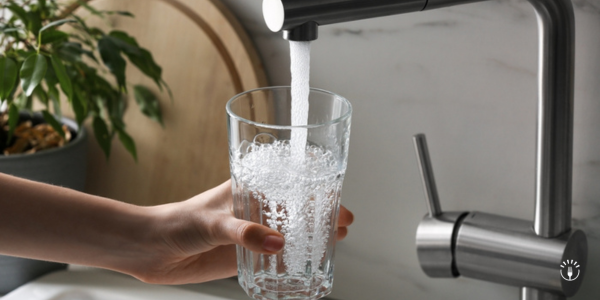
Heart disease is the leading cause of death for both men and women and accounts for every 1 in 4 deaths.
While there are multiple contributors to these alarming statistics, high cholesterol increases the risk of developing heart disease. But not all cholesterol is considered to be "bad."
In fact, higher levels of that "good" cholesterol can actually protect the heart and arteries from disease!
Curious how you can raise your good cholesterol naturally? Learn more about what steps you can take to increase your good cholesterol to benefit heart health.
What Is HDL Choesterol?
High-density lipoprotein (HDL) is also known as the "good" cholesterol. HDL works to clear out low-density lipoprotein (LDL), or known as the "bad" cholesterol, which can cause fatty buildup in the arteries and puts heart disease at higher risk.
When HDL is present, it carries the LDL cholesterol from the arteries and to the liver where it is broken down and excreted from the body.
WebMD warns HDL cholesterol levels less than 40 milligrams per deciliter (mg/dL) are not good. A recommended HDL cholesterol level is 60 mg/dL or higher.
If numbers are lower than the recommendations, you may be wondering how to raise HDL cholesterol. Fortunately, there are proven steps to increase HDL cholesterol and improve health - even without medication!
10 Ways to Raise HDL Cholesterol Naturally
While genetics and other things you cannot control can impact cholesterol levels, the following are ways to raise HDL through simple lifestyle changes.
1. Increase Dietary Fiber Intake
Dietary fiber is an indigestible plant component well-known for its supporting role in bowel and heart health. According to a 2015 study, there is a significant link between high-fiber diets and higher HDL levels.
As part of a heart-healthy diet plan, men should consume at least 38 grams of fiber each day while women should consume at least 25 grams daily.
Easily increase fiber intake by:
• Choosing whole grains over refined grains, including oats, barley, wheat, brown rice, and products that contain them
• Consuming at least 3 servings of vegetables daily
• Eating 2 servings of whole fruit daily, in which their skin intact
• Limiting or avoiding juices devoid of its fiber content
• Incorporating more plant-based protein sources, including black beans, chickpeas, and lentils
2. Regulate Trans and Saturated Fats In the Diet
The American Heart Association (AHA) recommends 25 to 35 percent of total daily calories coming from fat. But not just any type of fat…
The AHA advises reducing saturated fats to less than 5 to 6 percent and trans fats to less than 1 percent, as their intake can lower HDL levels, raise LDL levels, and increase the risk of developing heart disease and stroke.
Naturally regulate the intake of trans and saturated fats by:
• Identifying for and steering clear of products prepared with hydrogenated or partially hydrogenated oils
• Limiting commercially prepared baked goods, including doughnuts, cookies, cookies, and other pastries
• Reducing fried foods especially from fast food restaurants
• Using healthier vegetable oils when cooking, including olive and canola oils
3. Swap Out Red Meat with Fatty Fish
While lean red meats can certainly fit into a well-balanced diet, aim to eat more fish in its spot, or at least twice per week to reap the health benefits of fish.
Fatty fish is naturally low in saturated fat and rich in omega-3 fatty acids, which research has shown to increase HDL better than an omega-3 supplement.
Fatty fish rich in omega-3s that can benefit HDL levels include:
• Anchovy
• Halibut
• Herring
• Mackerel
• Rainbow trout
4. Consider Fish Oil Supplements
Fatty fish consumption shows to be superior in improving HDL cholesterol levels. However, fish oil supplements can still be a valuable option, especially for those who do not consume omega-3-rich fish.
In fact, fish oil supplements - in addition to raising HDL levels - may also help improve insulin sensitivity and lowering blood triglyceride levels, according to a 2020 study.
If interested in supplementation, check with your doctor to find out which products are reputable and recommended intake levels.
5. Moderate Alcohol Consumption
While alcohol may actually increase HDL levels related to its antioxidant properties, it is important to keep its consumption in moderation or health can be compromised.
Men should limit alcohol consumption to two servings per day while women should limit to one serving. Alcohol serving sizes include:
• 12 ounces of regular or light beer
• 5 ounces of red or white wine
• 1.5 ounces of liquor
6. Lose or Maintain Weight
Being overweight increases LDL and reduces HDL cholesterol. Harvard Health suggests losing 5 to 10 percent of current weight can raise HDL.
To put these numbers in perspective, if someone weighs 240 pounds, a 5 to 10 percent weight loss equates to losing 12 to 24 pounds.
When following an overall healthy diet and lifestyle, achieving a healthy weight can result. But most importantly, healthy weight loss is most successful and sustained when it is gradual and sustainable.
While weight loss can help raise HDL, avoid drastic weight loss measures that do not follow a balanced, long-term solution for weight regulation.
7. Manage Diabetes
Having diabetes tends to lower HDL levels and raise triglyceride and LDL cholesterol levels, which further increases the risk for heart disease and stroke.
That being said, it is important to advise a plan to prevent uncontrolled blood sugars. Diabetes management may involve:
• Regular blood sugar tracking
• Coordination of a multidisciplinary healthcare team
• Diabetes meal plan, particularly with the focus on complex carbohydrate, fiber, lean protein, and healthy fat
• Medications, including antihyperglycemic agents and insulin
• Weight loss and maintenance
• Regular exercise
• Support groups
8. Participate in Regular Physical Activity
Exercise is known for providing many health benefits, including benefiting cholesterol levels. Raising the heart rate with exercise can help raise HDL cholesterol.
Besides, evidence supports physical activity improves both HDL cholesterol and helps lower triglyceride levels, including in previously sedentary populations.
So truly, there is no better time to get active! The American Heart Association recommends at least 150 minutes of moderate- to vigorous-intensity aerobic exercise each week, which can be accomplished with some of the indicated cardio activities:
• Brisk walking
• Jogging and running
• Cycling
• Skiing
• Swimming
• Dancing
• Rowing
• Kickboxing
Especially if new to exercise, start slow and work towards the recommended minutes. A doctor can also provide a safe, yet effective exercise regimen to fit personal needs and preference.
Ultimately, too, dismissing a sedentary lifestyle is key for overall health, and any exercise is better than going without it.
9. If You Smoke, Try to Quit
Research shows smoking negatively affects HDL levels in multiple ways. In fact, smokers have significantly lower HDL levels compared to non-smokers.
By quitting smoking, smokers can help increase their HDL levels. What's more, the change shows to occur rapidly after quitting.
And with tobacco identified as the leading preventable cause of death in the U.S., there really is no better time to quit. Not only are you benefiting the health of your own body to live longer, but considering the health of others by reducing secondhand smoke.
10. Adopt A Heart-Healthy Lifestyle
A comprehensive heart-healthy lifestyle can lead to greater success in improving cholesterol levels and reducing the risks of heart disease and other health conditions. Many foods raise HDL and following a heart-healthy diet can help lower total and LDL cholesterol.
Truly, a heart-healthy diet plan emphasizes whole grains, fruits and veggies, poultry, fish, and nuts. Also, reduce the intake of products rich in refined flours and sugars, as they can increase triglyceride levels and inflammation in the body.
A heart-healthy diet is also naturally low in sodium thanks to the promotion of fresh foods. For best individual recommendations, consult with a doctor regarding sodium intake.
How to Raise Good Cholesterol Recap
If HDL levels are lower than what is recommended, be encouraged that lifestyle modifications can help raise HDL. Adopting a heart-healthy lifestyle that emphasizes a diet high in fiber, low in trans and saturated fat, incorporates fatty fish or fish supplements, no more than moderate alcohol intake, and exercising regularly are key ways to help raise HDL naturally.
Other lifestyle factors that can help raise HDL include losing weight, managing diabetes, and quitting smoking if applicable.
References:
Cigarette smoking negatively affects HDL-C in multiple ways - pace-CME. PACE. Published July 15, 2013. https://pace-cme.org/2013/07/18/cigarette-smoking-negatively-affects-hdl-c-in-multiple-ways/.
Forey BA, Fry JS, Lee PN, Thornton AJ, Coombs KJ. The effect of quitting smoking on HDL-cholesterol - a review based on within-subject changes. Biomarker research. Published September 13, 2013. https://www.ncbi.nlm.nih.gov/pmc/articles/PMC4177613/.
HDL: The good, but complex, cholesterol. Harvard Health. Published August 6, 2019. https://www.health.harvard.edu/newsletter_article/hdl-the-good-but-complex-cholesterol.
Hoffman M. HDL cholesterol: "The good cholesterol". WebMD. Published July 20, 2020. https://www.webmd.com/cholesterol-management/guide/hdl-cholesterol-the-good-cholesterol#1
Souza DRde, Pieri BLda S, Comim VH, et al. Fish oil reduces subclinical inflammation, insulin resistance, and atherogenic factors in overweight/obese type 2 diabetes mellitus patients: A pre-post pilot study. Journal of Diabetes and its Complications. Published January 28, 2020. https://www.sciencedirect.com/science/article/abs/pii/S1056872719312218.
Trans fats. American Heart Association. Published January 13, 2021. https://www.heart.org/en/healthy-living/healthy-eating/eat-smart/fats/trans-fat.
Zhou Q, Wu J, Tang J, Wang J-J, Lu C-H, Wang P-X. Beneficial effect of higher dietary fiber intake on plasma HDL-C and TC/HDL-C ratio among Chinese rural-to-urban migrant workers. International journal of environmental research and public health. Published April 29, 2015. https://www.ncbi.nlm.nih.gov/pmc/articles/PMC4454936/.
Zibaeenezhad MJ, Ghavipisheh M, Attar A, Aslani A. Comparison of the effect of omega-3 supplements and fresh fish on lipid profile: A randomized, open-labeled trial. Nature News. Published December 19, 2017. https://www.nature.com/articles/s41387-017-0007-8.







